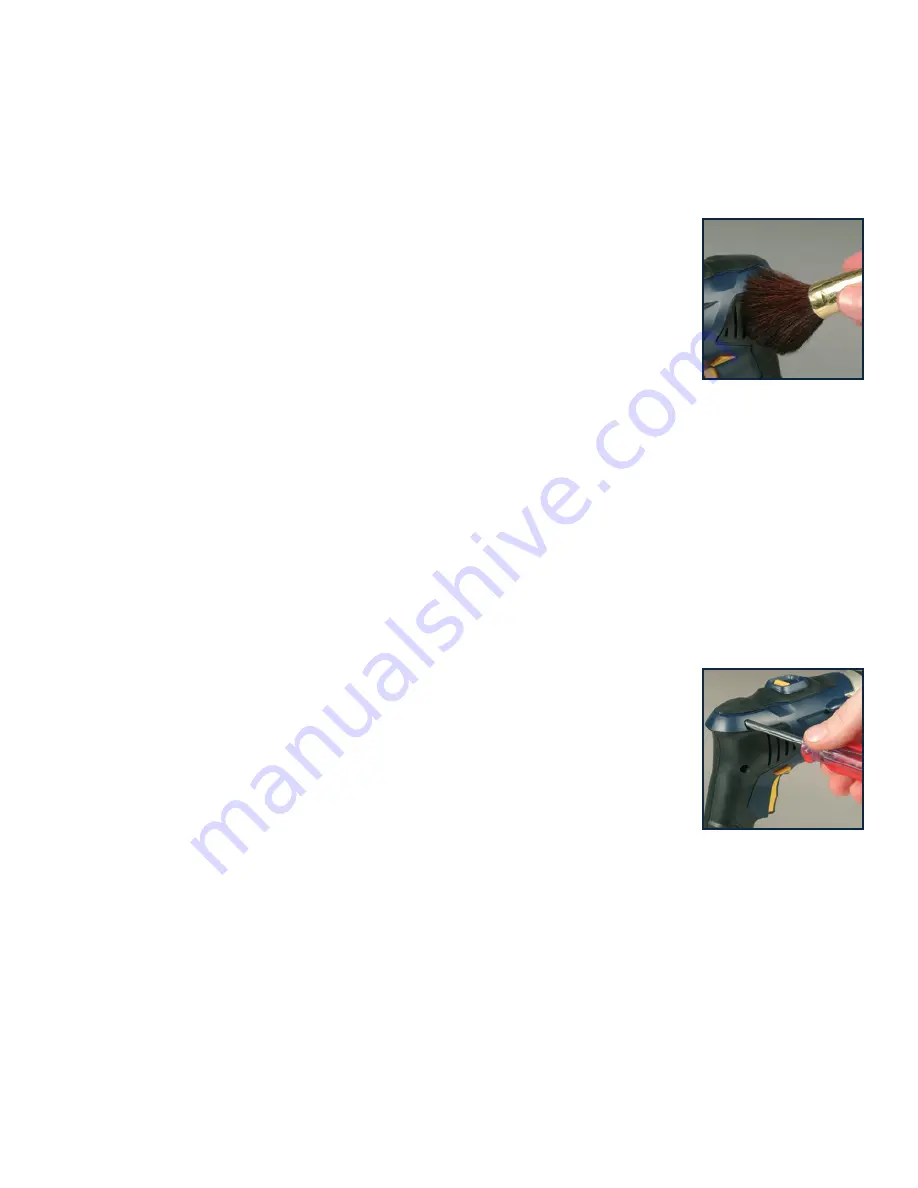
14
Hints for use
•
When driving screws close to the ends of hardwoood or
treated timber boards it may be necessary to pre-drill pilot
holes to prevent spitting.
•
Use the proper screws for the task on hand. Drywall
screws are not suitable for decking applications.
•
Make sure that screws are long enough to ensure a
secure fastening.
•
Use the low speed gear when driving into decking and
the like, and the high speed gear when driving into
drywalls.
•
Once the screw has started to drive into the material, do
not stop until it is fully seated. Keep full pressure of the
bit on the screw head to prevent slippage and possible
damage to the screw head or bit.
•
Before driving deck screws check that there is not gap
between the board and the support.
•
Do not drive through knots in the wood unless absolutely
necessary. If there is no choice, pre-drill a pilot hole to the
same diameter as that of the screw shank.
Maintenance
WARNING.
Ensure that the
tool is switched off and the
battery is removed before
changing accessories or
carrying out other adjustment
or maintenance procedures.
Keep the tool’s air vents
unclogged and clean at all times.
Regularly check to see if any dust or foreign matter has
entered the grills near the motor and around the trigger
switch. Use a soft brush to remove any accumulated dust.
Wear safety glasses to protect your eyes whilst cleaning.
Re-lubricate all moving parts at regular intervals.
If the body of the tool needs cleaning, wipe it with a soft
damp cloth. A mild detergent can be used but nothing like
alcohol, petrol or other cleaning agent.
Never use caustic agents to clean plastic parts.
CAUTION.
Water must never come into contact with
the tool.
General inspection
Regularly check that all the
fixing screws are tight. They
may vibrate loose over time.


































